Today’s Current Affairs: 28th October 2025 for UPSC IAS exams, State PSC exams, SSC CGL, State SSC, RRB, Railways, Banking Exam & IBPS, etc
Table of Contents
Sunni Dam Hydro Electric Project:
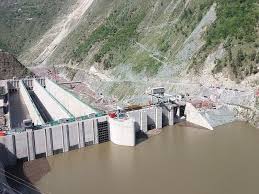
The National Green Tribunal (NGT) has taken cognisance of a complaint alleging illegal dumping of muck into the Sutlej during blasting activities for the construction of the Sunni Dam hydroelectric project in Shimla district’s Sunni tehsil.
- Sunni Dam Hydro Electric Project (HEP) is a 382 MW run-of-the-river hydroelectric project.
- It is being developed on the Satluj River in the Shimla and Mandi districts of Himachal Pradesh.
- The project is owned by Satluj Jal Vidyut Nigam (SJVN), a collaborative venture between the government of India and the state government of Himachal Pradesh.
- Sunni HEP will involve building a concrete gravity dam across the Satluj River and an underground powerhouse on the right bank of it.
- The project will generate 1,382 million units of electricity annually.
- The project is a part of the larger Luhri HEP, which is being developed in three distinct stages along the Satluj River within the northern Indian state of Himachal Pradesh.
- The stages comprise the 210 MW Luhri Stage-1, the 172 MW Luhri Stage-II, and the 382 MW Sunni HEP.
Dilmun Civilization:
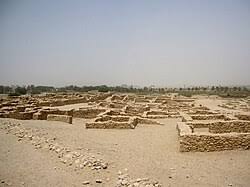
Kuwait’s Failaka Island has just yielded one of its most significant secrets in decades: a 4,000-year-old temple belonging to the powerful Bronze Age Dilmun civilization.
- Dilmun Civilization was a civilization located in the eastern part of the Arabian Peninsula.
- Dilmun was mainly located on the islands of Bahrain and Failaka Island in Kuwait.
- It also had a presence in parts of Saudi Arabia, Qatar, Oman, and the nearby Iranian coast in the Persian Gulf.
- Although this was quite an old civilization, it is much less famous than the four cradles of civilization of the Old World,e., Mesopotamia, Ancient Egypt, the Indus Valley Civilization, and the Yellow River Civilization.
- The Dilmun civilization first took shape towards the end of the 4th millennium BCE, around 3200 to 3000 BCE, starting out as a modest trading hub.
- By the early 3rd millennium BCE, it had grown into a recognised power in the region.
- Dilmun acted as a central point for trade between two of the biggest ancient civilizations: Mesopotamia (modern-day Iraq) and the Indus Valley Civilization (modern-day Pakistan and India).
- Goods like copper, pearls, and other materials passed through Dilmun. This made it a rich and powerful place.
- One of Dilmun’s most important roles was providing copper. Copper was a vital metal in the Bronze Age, used for tools, weapons, and art.
- Dilmun helped supply this important metal to Mesopotamia, which needed it for its growing cities and armies.
- After 1600 BCE, the empire began to dwindle, then slowly declined like many other empires.
- It was eventually absorbed into Mesopotamia and Persia at a later date.
- Archaeologists have found many ancient sites in Bahrain and Kuwait that match the descriptions of Dilmun.
- These sites include old settlements, burial mounds, and artifacts like unique stamp seals.
Bondla Wildlife Sanctuary : In News
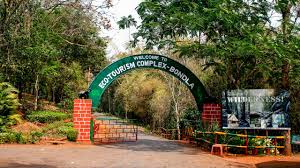
Goa’s only zoo, located within the Bondla Wildlife Sanctuary, is set to welcome new animals after 12 years a barking deer and a pair of sloth bears.
- Bondla Wildlife Sanctuary is located in the northeastern portion of Goa.
- It is spread over an area of approximately 8 sq.km. and is located 3000 ft. above on the lush foothills of the Western Ghats.
- Because of the fact that it is very small in size, the Bondla Wildlife Sanctuary is better known as a wildlife resort.
- This sanctuary was initially set up as a refuge for orphaned and injured animals.
- Today, apart from the wildlife species, the sanctuary houses a deer safari park, a rose garden, a zoo, and a botanical garden
- The Rangado river flows on the eastern side, while the Madhel flows across the northern side.
- The sanctuary is mostly covered with moist deciduous forest with small patches of semi-evergreen forest and cane along streams.
- The dominant trees in this Sanctuary are Terminalia crenulata (Matti, the state tree of Goa) and Rosewood.
- It is home to animals like Panthers, Leopard Cats, Deer, Wild Boar, Gaur, and Malabar Giant Squirrel.
- The bird species include Common Grey Hornbills, Golden-Backed Woodpeckers and Ruby-Throated Yellow Bulbuls.
Decline Of Dogri Language:
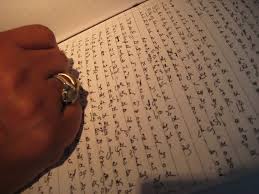
Growing concern has emerged over the gradual decline of the Dogri language in the Jammu region.
- Dogri Language is an Indo-Aryan language, part of the larger Indo-European family of languages.
- It is spoken in India, chiefly in the Jammu region of Jammu and Kashmir.
- It is also spoken in the state of Himachal Pradesh and in northern Punjab, other parts of Jammu and Kashmir, and elsewhere.
- The earliest written reference to Dogri (using the paleonym Duggar) is found in the Nuh sipihr (“The Nine Heavens”), written by the poet Amir Khosrow in 1317 CE.
- It has its origin in the old Indo-Aryan language,e., language of the Vedas and Laukik Sanskrit.
- Like other modern Indo-Aryan languages, Dogri has also passed through Old Indo-Aryan (Sanskrit) and Middle Indo-Aryan (Pali, Prakrit, and Apabhramsha) stages of development and entered the modern Indo-Aryan stage around the 10th century A.D.
- Hence, it shows its three-fold process of development of its sound structure, expressing its affinity with Shaurseni Prakrit.
- Initially written in the Takri script, Dogri now uses the Devanagari script, which is also utilized by several other Indian languages.
INS IKSHAK:
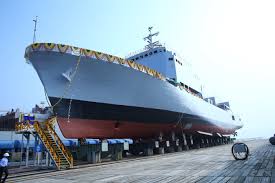
The Indian Navy’s indigenously built Survey Vessel (Large), Ikshak, is set to be commissioned at Naval Base Kochi.
- It is the indigenously built Survey Vessels (Large) (SVL) which will study underwater hydrography.
- The ship’s name, Ikshak, meaning “The Guide”, symbolises its purpose: to chart unexplored waters, ensure safe navigation for mariners.
- It is constructed by Garden Reach Shipbuilders & Engineers (GRSE) Ltd, Kolkata.
- INS IKSHAK boasts over 80% indigenous content.
- The Survey Vessel (Large) ships are 110 m long, 16 m wide with deep displacement of 3400 tons.
- Propulsion system of the ship consists of two Main Engines in twin shaft configuration and is designed with cruise speed of 14 knots and maximum speed of 18 knots.
- Beyond its primary role in hydrographic survey operations, Ikshak is equipped with dual-role functionality, enabling it to operate as a Humanitarian Assistance and Disaster Relief (HADR) platform and a hospital ship during emergencies.
- It is the first vessel in the SVL class to feature dedicated accommodation for women officers and sailors.
Taal Volcano:
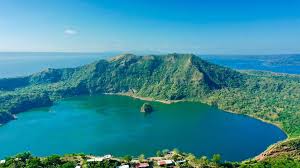
Taal Volcano in the Philippines reportedly erupted three times
- It is located in Batangas province about 70 kilometers south of Manila, Philippines.
- Taal is classified as a “complex” volcano by the Philippine Institute of Volcanology and Seismology (PHIVOLCS).
- Taal is an active volcano within a massive caldera, with at least 38 recorded eruptions in the last 450 years.
- The caldera is believed to have formed during a series of prehistoric eruptions between 140,000 and 5,380 BCE.
- It is a stratovolcano with a crater lake on a 5-km-wide volcanic island within a large caldera.
- It does not rise from the ground as a distinct, singular dome but consists of multiple stratovolcanoes, conical hills and craters of all shapes and sizes.
- Complex volcano is also called a compound volcano, is one that consists of a complex of two or more vents, or a volcano that has an associated volcanic dome, either in its crater or on its flanks.
- Examples: Vesuvius, besides Taal.
2nd International Bharat 6G Symposium:
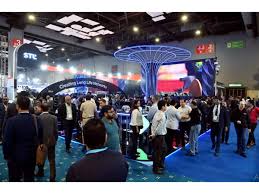
At the India Mobile Congress(IMC) 2025, India highlighted its growing leadership in next-generation telecom through the 2nd International Bharat 6G Symposium, marking a key step towards building a self-reliant, innovative, and globally connected 6G ecosystem for Viksit Bharat 2047.
- The IMC is Asia’s most prominent technology expos, jointly organized by the Department of Telecommunications (DoT) and the Cellular Operators Association of India (COAI).
- At the Symposium, global research alliances including Bharat 6G, 6G-IA (European organization), ATIS’ Next G Alliance (North American organization), and others issued a Joint Declaration to shape 6G as a global public good.
- The declaration outlines five core principles for 6G networks that are trusted and secure, resilient and reliable, open and interoperable, inclusive and affordable, and sustainable and globally connected.
- The declaration also calls for skills development and global collaboration to build a future-ready, inclusive 6G ecosystem aligned with India’s 6G Vision 2030.
- The symposium highlighted India’s 6G roadmap aiming for USD 1.2 trillion GDP impact by 2035 and 10% of global 6G patents, along with a threefold growth in satellite communications by 2033.
- The Symposium showcased India’s indigenous 4G stack as a milestone toward technological self-reliance and export readiness.
- The symposium urged stronger global collaboration, indigenous R&D, and industry- academia synergy to build an inclusive 6G framework.
- It highlighted India’s shift from a technology consumer to a co-creator and global leader, backed by milestones like the rollout of one lakh indigenous 4G towers.
Bharat 6G Vision:
- Bharat 6G Vision launched in 2023, Bharat 6G Vision aims to position India as a global leader and co-creator in next-generation wireless communication.
- It aligns with the Viksit Bharat 2047 goals, focusing on affordability, sustainability, and universal access by 2030.
- Bharat 6G Alliance (B6GA) An industry-led, government-facilitated body uniting telecom operators, academia, startups, and R&D institutions.
Google’s AI C2S-Scale:

Google DeepMind’s AI model Cell2Sentence-Scale 27B (C2S-Scale) produced a new, lab-confirmed hypothesis on cancer cell behavior, marking a breakthrough in AI-driven drug discovery and biological research.
- C2S-Scale is a large language model (LLM) built on Google’s Gemma-2 architecture, trained to understand gene expression as a language.
- With 27 billion parameters, the model can capture subtle relationships among genes, cells, and tissues, reflecting AI “scaling laws”—where larger models gain emergent abilities that smaller models lack.
- It translates single-cell RNA sequencing (scRNA-seq) data and interprets biological functions as ‘cell sentences’, learning patterns from millions of cells to understand cellular functions.
- The AI hypothesized that the drug silmitasertib could act as a conditional amplifier, making cancer cells more visible to the immune system only in the presence of low interferon.
- C2S-Scale enables in-silico (computer-based) screening at unmatched speed and scale, accelerating scientific discovery.
The EU–India New Strategic Agenda 2025:
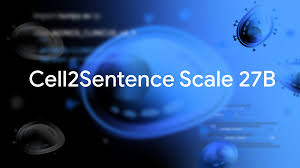
The European Union and India, under the New Strategic EU–India Agenda (2025) adopted in October, agreed to link the Indian Carbon Market (ICM) with the EU’s Carbon Border Adjustment Mechanism (CBAM).
- The EU–India New Strategic Agenda (2025) is a forward-looking framework jointly adopted by the European Union (EU) and India, outlining a comprehensive roadmap to strengthen cooperation for the next decade.
- It builds upon the 2020 EU–India Strategic Partnership: A Roadmap to 2025, expanding collaboration into emerging areas like green transition, digital governance, defence, and global connectivity.
- The primary goal of the agenda is to elevate the EU–India relationship into a transformative global partnership by:
- Promoting sustainable prosperity and climate action through joint clean energy transitions.
- Enhancing strategic autonomy and security cooperation in the Indo-Pacific and beyond.
- Deepening technological and digital collaboration to shape ethical and inclusive innovation.
- Strengthening people-to-people ties, education, and mobility for mutual growth.
- Establishing institutional and regulatory frameworks for equitable global governance and trade.
Key Features of the EU–India New Strategic Agenda (2025):
- The agenda is structured around five key pillars — (i) Prosperity & Sustainability, (ii) Technology & Innovation, (iii) Security & Defence, (iv) Connectivity & Global Issues, and (v) Enablers across pillars — ensuring holistic engagement across economic, political, and social dimensions.
- A landmark feature is the decision to link India’s Carbon Credit Trading Scheme (ICM) with the EU’s Carbon Border Adjustment Mechanism (CBAM), enabling carbon price deductions at EU borders — a milestone in North–South climate cooperation.
- Focus on renewable energy, green hydrogen, sustainable finance, and carbon neutrality pathways through technology transfer and co-investment.
- Includes joint initiatives in semiconductors, 5G/6G standards, AI ethics, quantum computing, and data protection frameworks aligned with privacy and transparency principles.
- Establishes a Security and Defence Partnership, promoting joint naval exercises, cybersecurity collaboration, and maritime domain awareness in the Indo-Pacific.
- Supports infrastructure connectivity through the EU’s Global Gateway Initiative and India–Middle East–Europe Economic Corridor (IMEC) to enhance regional trade and supply chain resilience.
Electronics Components Manufacturing Scheme:

The Government of India has approved the first batch of seven projects worth ₹5,532 crore under the Electronics Components Manufacturing Scheme (ECMS), projected to generate ₹36,559 crore in production.
- A flagship initiative under the Ministry of Electronics and Information Technology (MeitY) to strengthen India’s component-level manufacturing ecosystem and reduce dependence on imports for key electronic parts.
- Approved by the Union Cabinet in 2024, the scheme aims to make India self-reliant in critical electronic components and materials.
- Objective is to promote domestic manufacturing of sub-assemblies, bare components, and capital equipment, enhance domestic value addition (DVA), and integrate Indian firms with Global Value Chains (GVCs) in electronics and semiconductors.
- Tenure:
- Turnover-linked incentive: 6 years (with 1-year gestation).
- Capex incentive: 5 years.
European Union’s Proposed Ethanol Ban:
The European Union (EU) is considering a ban on ethanol-based products after the European Chemicals Agency (ECHA) flagged potential carcinogenic risks from prolonged exposure.The proposal by the European Union seeks to restrict or phase out ethanol-containing products, including fuel additives, industrial solvents, and personal care products, following ECHA’s assessment that ethanol exposure may pose cancer risks.ECHA’s scientific review links long-term ethanol exposure to potential carcinogenicity, particularly through by-products like acetaldehyde and formaldehyde, both associated with cancer.Burning ethanol-blended fuels can increase emissions of certain volatile organic compounds (VOCs), despite reducing others like carbon monoxide. The EU aims to align chemical safety regulations with its Zero Pollution and Green Deal commitments, prioritising public health over industrial use.
India’s U-18 boys and girls kabaddi teams win gold at the 2025 Asian Youth Games:
India reaffirmed its dominance in youth kabaddi by sweeping both the boys’ and girls’ gold medals at the 2025 Asian Youth Games held in Bahrain. With commanding performances across the board, both Indian U-18 teams emerged unbeaten champions, underlining the country’s strong pipeline of kabaddi talent and securing a major highlight in India’s overall medal tally.
Union Home Minister Amit Shah Inaugurates India Maritime Week:
On the occasion of India Maritime Week 2025 in Mumbai, Amit Shah, Union Minister for Home Affairs and Cooperation, inaugurated the flagship maritime event. Amit Shah underlined that India’s 7,500‑km coastline, 13 coastal states and Union Territories, and an Exclusive Economic Zone (EEZ) of 23.7 lakh sq km give the country major maritime advantages. He noted India’s strategic positioning as a bridge between the Indo‑Pacific region and the Global South, thanks to its democratic stability and naval capabilities. Alongside the Home Minister’s remarks, Sarbananda Sonowal, Minister for Ports, Shipping & Waterways, stated that India Maritime Week has “evolved into one of the most prominent maritime gatherings in the world,” featuring participation from 85 countries, 500 + exhibitors, and 40 forums, under the theme “Uniting Oceans, One Maritime Vision.” In addition, Devendra Fadnavis, Chief Minister of Maharashtra, announced the development of Vadhavan Port as India’s largest port and among the world’s top ten, further boosting India’s maritime power.
Vajra Chandrasekera Wins 2025 Le Guin Fiction Prize:
Sri Lankan writer Vajra Chandrasekera has won the 2025 Ursula K. Le Guin Prize for Fiction for his speculative novel Rakesfall. The $25,000 award recognises a single author whose imaginative fiction explores critical themes such as power, freedom, equity, and humanity’s place in the world. Praised as “an extraordinary achievement in science fiction,” the novel cements Chandrasekera’s reputation as one of the most powerful new voices in global speculative fiction.
RBI Approves Reappointment of C S Rajan at Kotak Bank:
The Reserve Bank of India (RBI) has approved the reappointment of C S Rajan as part-time Chairman of Kotak Mahindra Bank, extending his tenure from January 1, 2026, to October 21, 2027. This decision aligns with the end of his current term as an Independent Director and continues a phase of experienced leadership at one of India’s leading private banks. C S Rajan has been part-time chairman since January 1, 2024, following RBI’s earlier approval for a two-year term. His reappointment ensures leadership continuity as Kotak Mahindra Bank moves through a transformative growth phase.
D Gukesh, Divya Deshmukh Win Double Gold at European Club Cup:
Indian chess grandmasters D Gukesh and Divya Deshmukh captured individual gold medals at the European Chess Club Cup 2025, providing a timely confidence boost ahead of the Chess World Cup in Goa. Indian chess stars D Gukesh and Divya Deshmukh win individual gold at the European Chess Club Cup 2025, boosting momentum ahead of the World Cup in Goa.
Catherine Connolly Elected Ireland’s 10th President:
Catherine Connolly has been elected as the 10th President of Ireland, winning a landslide victory over her main rival, Heather Humphreys. While the presidency is largely ceremonial, Connolly’s win signals a notable shift in Ireland’s political landscape — especially given her background, endorsements and campaign platform.Catherine Connolly is an independent politician from Galway who has served as a Teachta Dála (TD) for the Galway West constituency since 2016. She previously held the position of Deputy Speaker (Leas‑Ceann Comhairle) in the Irish Parliament.
Stellerus to Launch First 3D Wind Data Satellite Network:
Hong Kong-based startup Stellerus Technology has announced plans to deploy the Feilian Constellation—the world’s first satellite constellation dedicated to capturing three-dimensional wind data. This ambitious project, named after the ancient Chinese god of wind, is set to transform how the world observes atmospheric dynamics, with vast implications for renewable energy, aviation safety, disaster management, and insurance modelling.Currently, 3D wind data—covering wind speed, direction, and vertical movement—is one of the least measured but most vital components of modern meteorology. Existing systems rely heavily on limited weather balloons and data collected from commercial aircraft, offering only sporadic insights. Satellite observations, too, fall short, particularly over oceans and in clear-sky conditions where cloud tracking is ineffective. Stellerus aims to close this data gap by deploying six satellites capable of producing hourly, kilometer-scale 3D wind maps worldwide. The first two satellites are scheduled for launch within 18 months, with full constellation deployment planned soon after.
Japan Launches World’s First Yen-Pegged Stablecoin:
Japan has officially launched the world’s first yen-pegged stablecoin, named JPYC, on October 27, 2025. The debut marks a key turning point in the country’s evolving financial ecosystem, which has traditionally leaned heavily on cash and credit cards. Issued by Tokyo-based startup JPYC Inc. the digital token is fully backed by Japanese yen and government bonds (JGBs), and offers zero transaction fees during its initial rollout phase.JPYC is a blockchain-based stablecoin, meaning it is a digital token designed to maintain a 1:1 value with the Japanese yen. The coin is backed by domestic savings and Japanese government securities, giving it stability and credibility in line with national financial policies. JPYC Inc. plans to issue up to 10 trillion yen ($66 billion) worth of the digital asset over the next three years. The company aims for widespread overseas usage, envisioning JPYC as a low-cost, fast, and secure means of digital payment, especially for startups and international businesses.
Indian Army Observes 79th Infantry Day:
Every year on 27 October, the Indian Army observes Infantry Day to commemorate a historic moment in independent India’s early defence efforts. This year marks the 79th Infantry Day, paying tribute to the infantry soldiers who air‑landed in Jammu & Kashmir in 1947 and played a pivotal role in defending Indian territory during the first major post‑independence conflict.In the months following India’s independence in August 1947, the princely state of Jammu & Kashmir faced an incursion by tribal raiders and elements supported by Pakistan. On 26 October 1947, Maharaja Hari Singh signed the Instrument of Accession to India, paving the way for Indian troops to be sent in. The very next day, on 27 October 1947, the 1st Battalion of the 1st Battalion, The Sikh Regiment was air‑lifted to Srinagar airfield in Dakotas to check the advance of the invaders. This deployment is widely regarded as the first full‑scale military action by independent India on its soil.




